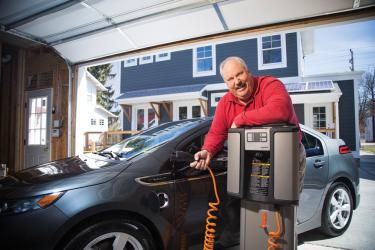SLHL: Why build green? Or why consider green when remodeling or upgrading your home?
Matt: Pure and simple: It makes economic sense. We also have a keen focus on the comfort of the occupants. A home or major remodel is about the largest investment people will make. We focus on the cost to operate and maintain that home including utilities, which is about 60% of most homeowners’ monthly budgets. The investment (initial cost) amount will be pretty similar, but if we can shrink that 60% by at least half that is a real economic savings not just for the life of the mortgage but the life of the building!
SLHL: How can a homeowner incorporate green building concepts into their existing home?
Matt: It is so much easier now than just a few years ago because of the products you can buy at a competitive cost. Energy is always the low hanging fruit. The best first step is to take stock in what you have and are doing now. An energy audit is a great investment and can provide a homeowner with an itemized to-do list. You do not have to necessarily do everything at once, but each step will pay for itself many times over. Don’t forget about water. Twenty five percent of household energy use is from the treatment, delivery and heating/use of water.
SLHL: What is the first step toward building a green residence?
Matt: PLANNING! It all starts with a good, experienced team: client, builder and design professional (architect). Every client has a bottom line. Through good design and best combination of building materials and equipment, it’s amazing what we accomplish on limited budgets. As we progress through the planning stage we bring in our trade partners as they bring their experience and cost-effective suggestions, plus as the project proceeds they are already familiar with the project, which makes the construction process more efficient.
SLHL: Does it cost more to build with green materials/products?
Matt: We have always used quality products to build with that cost a little more than the alternative, but quality is well worth it! Again, it is much easier to get “greener” materials now than just years ago and completion has brought costs in line with those alternatives. Normally, our largest project-cost increases by a large margin are the selection of high-end finish materials (tile, etc.) by the client. But we work with each client to manage each budget line item to get the best return on investment at every step.
SLHL: What is the latest in green homes?
Matt: On the energy side; L.E.D. lighting due to its durability (long life) and energy performance and even lighting color selection. We just completed a project incorporating daylight as part of our energy budget. That technology is only starting to make its way in to commercial standards. Cool stuff!
SLHL: What are the different green certifications?
Matt: There are quite a few. The better-known ones are LEED, which started as a commercial standard, and ANSI ICC-700, or the national green building standard. Both contain “holistic” criteria including site development and stormwater runoff all the way through energy and occupant comfort. There are a few focused primarily on energy: Energy Star, Passive House, D.O.E.’s Challenge Home Program and even EPA has a water sense and indoor air program. Since we usually meet the marks in multiple criteria we usually go ahead and certify to those also. It provides us a better level of performance and quality.
SLHL: What special voltage or requirements are needed to charge an electric car in your garage?
Matt: There are different voltage requirements depending on car manufacturer, however a 100 amp subpanel usually does the trick. In addition, we can run piping to a garage to allow for the addition of a compressed natural gas (CNG) car charging station. Right now CNG for residential is around $1 a gallon comparatively.
Matt Belcher is on the board of directors for the National Association of Home Builders. He also serves as chairman of the National Association of Home Builders Green Building sub-committee. He serves on the code development committee for the International Code Council and the board of the Green Building Initiative. A member of Active House Alliance, Matt was also recently appointed as director of the high performance building research center, which is part of the Midwest Energy Efficiency Consortium at the University of Missouri-Columbia.





